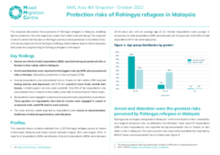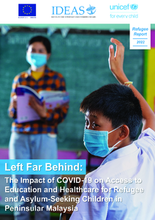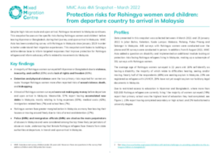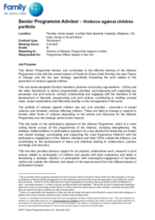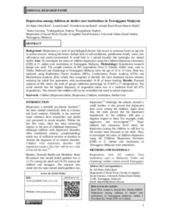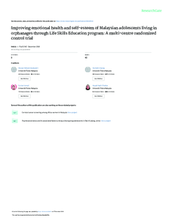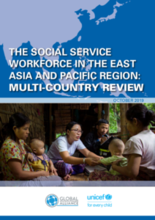demographic_data
adoption
social_work_force
key_stakeholders
Key Stakeholders
Add New DataDisplaying 11 - 20 of 57
This snapshot documents the experience of Rohingya refugees in Malaysia, shedding light on protection risks that negatively impact their safety and well-being. This snapshot is one of a series that focuses on Rohingya journeys and experiences in Southeast Asia, with the key objective of contributing to building a solid evidence base to inform advocacy and protection programming for Rohingya refugees in the region.
This thematic report is a merged and synthesised version of two full study reports, each focusing on education and healthcare in Malaysia. More details regarding the background, methodology, findings and recommendations of this project are found in the respective study reports.
KUALA LUMPUR: At least 4% of children, aged between 12 and 17, who use the Internet in Malaysia are subjected to online sexual exploitation and abuse, reveals a report by the United Nations Children's Fund (Unicef).
Despite high risks en route and upon arrival, Rohingya movement to Malaysia continues. This snapshot focuses on the specific risks facing Rohingya women and children before leaving Myanmar or Bangladesh, during their journey, and upon arrival in Malaysia. MMC Asia has been conducting survey with Rohingya in Malaysia since January 2019 in order to better understand their migration experiences. This snapshot contributes to building a solid evidence base to inform targeted responses that improve protection for Rohingya refugees and inform advocacy efforts related to movements to Malaysia.
The Malaysian government does not have any plans to ban underage marriages, but women, family and community development minister Rina Harun says it remains committed to preventing such unions. She said there was a need to manage the issue through education, advocacy, strengthening the family institution and socioeconomic support in the community.
Salary:
GBP £50-55,000 equivalent - fixed in local currency. Salary will be determined based on experience and adjusted to the local market rate.
Malaysian children, especially teenagers, are becoming anxious and depressed from spending too much time online with classes and socialising limited mostly there, a new study finds.
The aim of this study was to investigate the status of children depression using the Children Depression Inventory (CDI) at 21 shelter care institutions in Terengganu, Malaysia.
The current randomized control study aimed to determine, if a life skills-based intervention could improve the emotional health and self-esteem among Malaysian adolescents in orphanages.
The first multi-country review of the social service workforce in the East Asia and Pacific region was prepared by the Global Social Service Workforce Alliance (GSSWA) and the United Nations Children’s Fund (UNICEF) East Asia and the Pacific Regional Office (EAPRO) with the support and contribution of many people throughout the region. This report is one of several regional reports being produced by GSSWA and UNICEF to increase the availability of information on the social service workforce, and provide a baseline from which to consider ongoing workforce strengthening initiatives.

